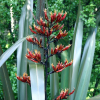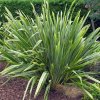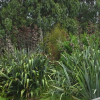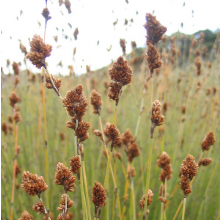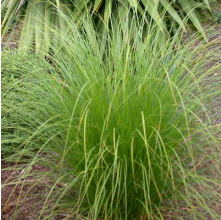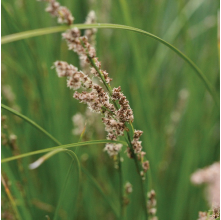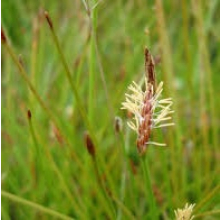Phormium tenax
(Harakeke, Swamp Flax)
Phormium tenax
(Harakeke, Swamp Flax)
Prices:
| Each | 20 or more | |
|---|---|---|
| 1.5L Pot | $9.50 | $9.00 |
Details:
| Type: | Flax |
| Growth Rate: | Medium |
| Mature Height: | 3 m |
| Mature Width: | 2 m |
| Site Condition: | Coastal, Exposed, Frost Tolerant, Heavy Soil, Loamy Soil, Sandy Soil, Waterways |
| Sun: | Full Sun, Part Shade |
| Drainage: | Dry, Moist, Wet |
| Frosts: | Hardy |
| Features: | Suitable for hedging or shelter. Attractive to birds, insects, lizards and bees. Colorful perennial. Rongoa. Low Flammability. Flower colour: Red. Foliage colour: Green. Fruit colour: Black. Native. Suitable restoration species. |
Phormium tenax, Harakeke, commonly called Swamp Flax, is one of the oldest plant species in New Zealand and it is unique to New Zealand. With its sword-shaped leaves it is a common feature of the New Zealand landscape. It grows up to 2 -3 metres high and its flower stalks can reach up to 4 metres. The flowers are brownish red in Summer, followed by black seed pods that stand upright from the stems. It is very hardy and fast growing with wide environmental tolerances. It will grow in dry and wet conditions, withstand strong and coastal winds and are frost hardy. It is used for hedging or shelter and in mixed native planting. It is also a pioneer plant meaning it should be one of the species planted first in a restoration planting plan as it establishes quickly when planted and shelters other plants.
Plant communities that include Apodasmia similis, Carex maorica, Carex secta, Carex virgata, and Eleocharis acuta often contain Phormium tenax.
History of use: Traditional uses of flax No fibre plant was more important to Maori than flax. Each pa or marae typically had a pa harakeke or flax plantation. Different varieties were specially grown for their strength, softness, colour and fibre content. Traditionally when harakeke leaves were removed from the plant, only the older leaves on the outside were taken. It is believed the three inner layers of the plant represented a family. This outer layer represented the grandparents, whereas the inner layer of new shoots or the child remained to be protected by the next inner layer of leaves, the parents. The uses of the flax fibre were numerous and varied. Clothing, mats, plates to eat off, baskets, ropes, bird snares, lashings, fishing lines and nets were all made from flax. Babies were even given rattles made from flax. Other parts of the plant were also used. Floats or rafts were made out of bundles of dried flower stalks (kokari). The abundant nectar from flax flowers was used to sweeten food and beverages. Flax also had many medicinal uses. The sticky sap or gum that flax produces was applied to boils and wounds and used for toothache. Flax leaves were used in binding broken bones and matted leaves were used as dressings. Flax root juice was routinely applied to wounds as a disinfectant. Today, flax is used in soaps, hand crèmes, shampoos and a range of other cosmetics. Flax seed oil can also be found for sale.
Habitat: Common from lowland and coastal areas to montane forest, usually but not exclusively, in wetlands and in open ground along riversides.
Flowering: Summer [November - December]
Fruiting: Summer [January - April]
My Lists: Erosion Control, Wetland, Pioneer Species
Plant Calendar:
| Jan | Feb | Mar | Apr | May | Jun | Jul | Aug | Sep | Oct | Nov | Dec |
|---|---|---|---|---|---|---|---|---|---|---|---|
| FS | FS | FS | FS | N | N |
| Flowering | Fruiting | Both | |
| Key |
| Fruit | Seed | Nectar | |
| Key | F | S | N |

